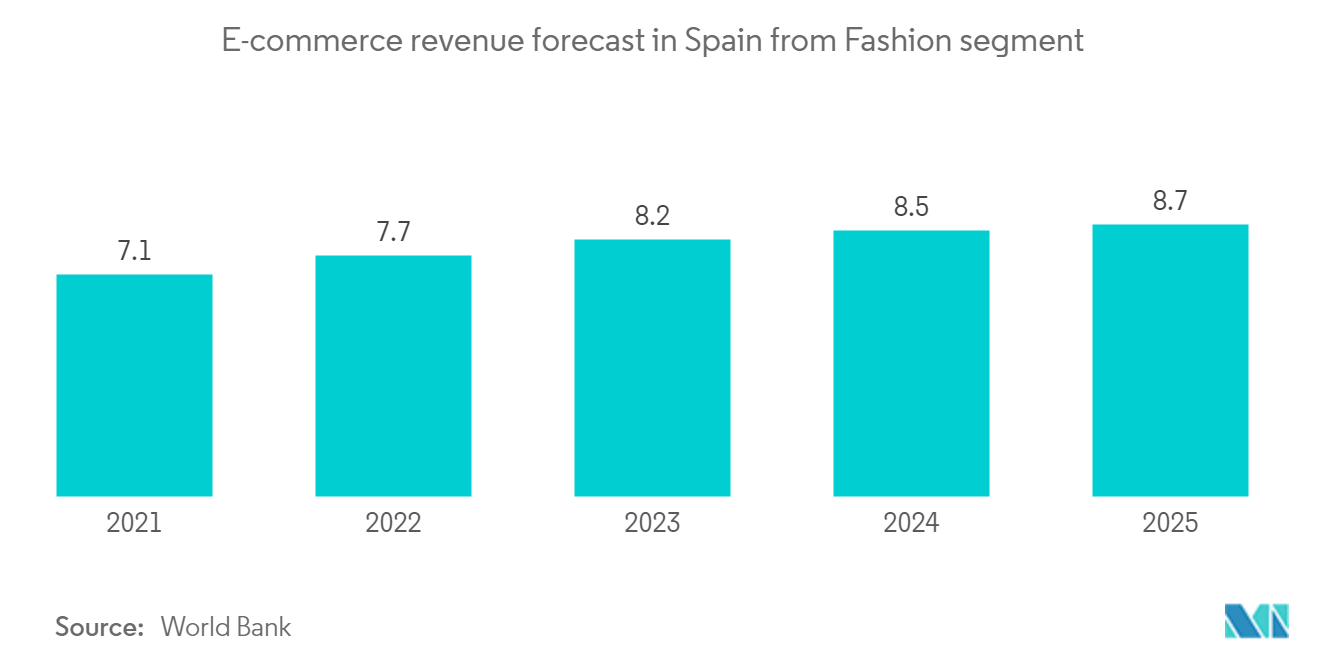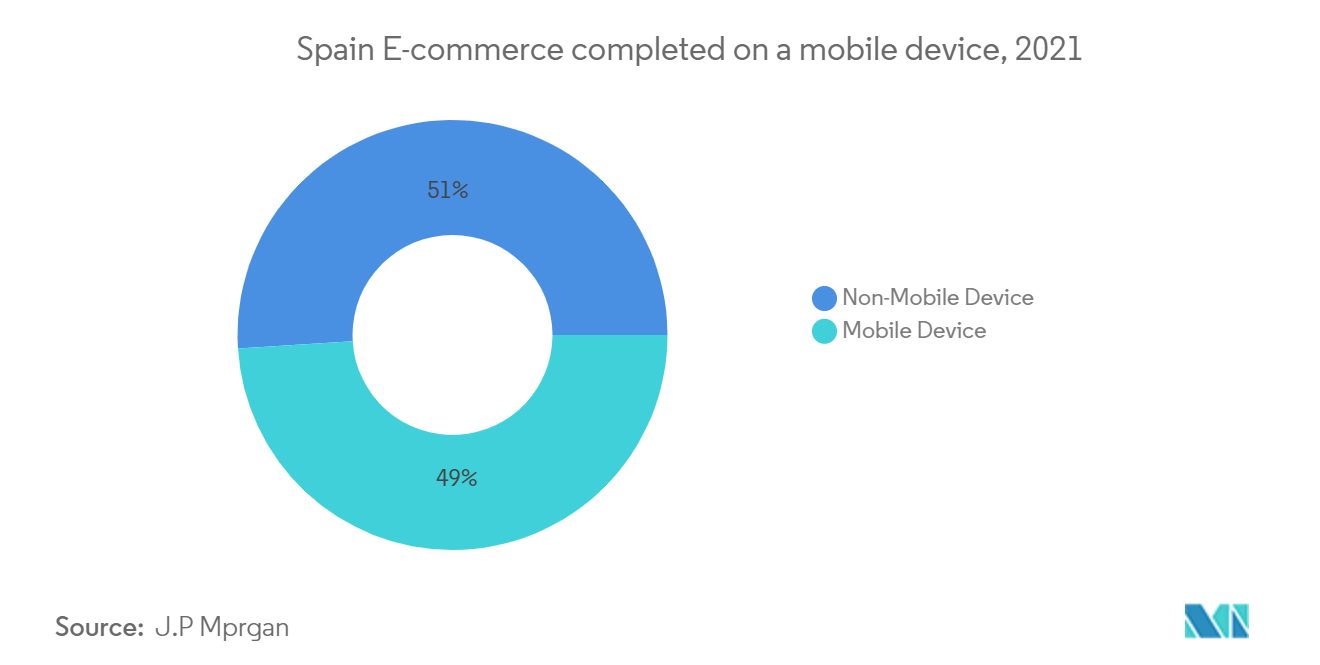Market Trends of Spain E-commerce Industry
This section covers the major market trends shaping the Spain E-commerce Market according to our research experts:
Increasing smartphone penetration
- Global online retail sales totaled $4.9 trillion. It is expected to grow by more than 50% over the next four years. Mobile commerce continues to grow; by 2021, mobile users will have generated $3.56 trillion in retail e-commerce sales. For years, e-commerce sites have optimized the mobile experience to increase online sales.
- Spain offers excellent robotics and automation subsectors opportunities, where US exporters can compete. Spain is the world's tenth-largest market and Europe's fourth. The number of new robot installations in Spain reached 5,266 units in 2018 and is expected to rise in the coming years. Companies in Spain employ 160 robots per 100,000 employees. Robotic automation implementation processes are currently used by 53% of Spanish businesses.
- With the introduction of Amazon's Prime service, logistics has become a critical differentiator for Spanish sellers in the Spanish eCommerce market. Second, Spain has one of the highest smartphone penetration rates in Europe, fueling eCommerce growth. Finally, as the market grows, the need for industry participants to integrate analytics, artificial intelligence, big data, and chatbots becomes more critical.
- The new EU VAT rules, which go into implication on July 1, 2021, and for EU Authorized Representatives on July 16, 2021, would also affect everyone in the eCommerce supply chain, from online sellers and marketplaces/platforms both inside and outside the EU to postal operators and couriers, customs and tax administrations, and to the end-user/consumer.
- Another vital aspect of e-commerce is digital marketing. According to the IAB Spain Digital Ad Spending Report, digital ad spending in 2020 is expected to be $3.4 billion (3 billion euros). It is one of only a few European markets that has experienced negative growth this year (-3.8 percent). The main in-country eCommerce events include eShow Madrid, held in conjunction with the event Technology for Marketing -TFM in Madrid.

Growth of B2C E-commerce in Spain
- Tourism in Spain is integral to their economy, and citizens and international visitors are encouraged to book flights and accommodation after the COVID-19 pandemic would be vital to Spain's e-commerce growth. The government has created a US$964.4 million loan scheme to improve the Spanish tourism industry's e-commerce infrastructure. Further, in Spain, Mid-career citizens have embraced e-commerce faster than younger ones, likely due to higher disposable income. The 35-44 age group has more online shoppers than Spain's 45-54 age group.
- Mobile commerce had a more positive outlook than the overall e-commerce market, set to expand at a compound annual growth rate of 17.3 % to 2023, where it will generate EUR39.5 billion in sales. Mobile commerce growth is backed by good smartphone penetration (at 72.5 percent and rising) and a tendency to shop using portable devices. Desktop computers are not the top three preferred ways to access online shopping in Spain. Laptops (first), smartphones (second), and tablets (third) dominate instead. Enabling mobile commerce sites to work seamlessly with voice assistant technology may be an important route to cracking the Spanish market. The technology is a key feature of Spain's digital culture, with half of Spaniards already using a voice assistant; Google Assistant is the most popular, followed by Apple's Siri.


